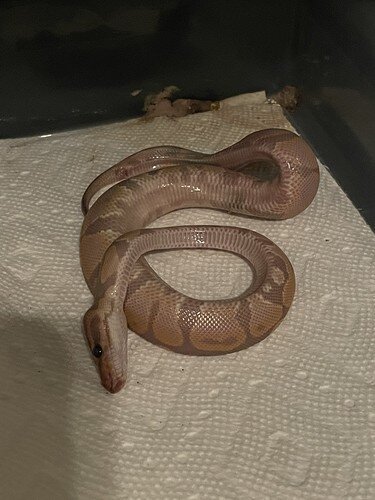I unfortunately had another ball python hatchling pass away today. I’m not entirely sure when the death occurred, but I went to clean tubs and found the poor thing curled up and partially on his back in his tub.
So, I wanted to create a topic about it. Not a lot of breeders openly talk about this part of the hobby, and I’d love to hear some insight from fellow breeders on the topic.
Are premature deaths in hatchlings common?
If known what the cause was, was it an internal issue? Failure to thrive?
Here’s my experiences for my first breeding season, just with my ball pythons:
My first clutch of 8 eggs this season only had one surviving baby, and I had to assist feed him for a long time before he finally started taking live food on his own. A few eggs from this clutch had died early into incubation, and the ones that did make it to the end had a lot of deformities and issues and most died soon after hatching. I had to cull one because the belly ruptured and decided it was best to not let it suffer any longer.
I suspect the issues may have arisen from an incubator issue early on, but otherwise am not sure what happened.
I then had a baby from my second clutch die suddenly, though he wasn’t eating well and regurgitated his last meal. I assume it was just a failure to thrive, and nothing I could do about it.
This last one was from my 10 egg clutch, and all of the babies hatched out rather small since the eggs were small (which I think may contribute to a higher mortality rate if the hatchlings don’t get established fast enough)
This male in particular also regurgitated his last meal before passing away. I’m not entirely sure of the reason though, since these babies are a lot younger and haven’t had as much time to be established. 3 other males from this same clutch have also regurgitated meals, but one has resumed feeding without issues and the other ones will need more time before I can offer food again.
I’ve also had to assist feed 2 other snakes, one is eating on his own now, the other I am still trying to get established. Hopefully she pulls through!
